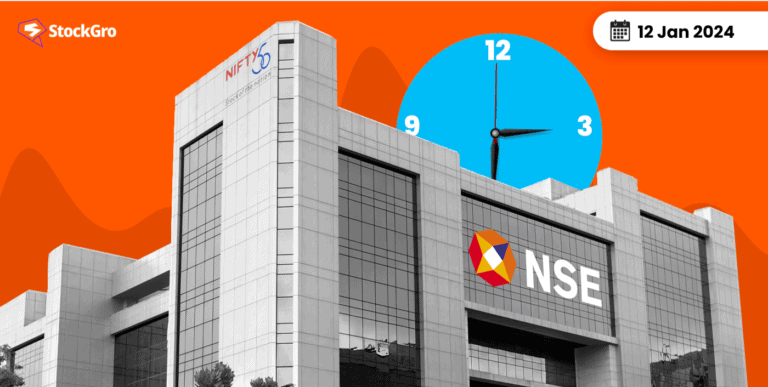
“What is the most secure approach to making investments?” This is a question most investors ask themselves. Then there’s the phrase “diversification” or “don’t put all your eggs in one basket”!
We do, however, have a response for each of these: Securities issued by the government. The government issues securities as a means of borrowing money from the market. Another name for them is gilts or gilt-edged securities.
In this article, we will talk about what exactly gilts are, the different types of gilt-edged securities and their pros and cons before you decide to invest in them. Let’s begin!
Also read: Bond voyage: Unraveling the intrigue of Bonds
What are gilt-edged securities?
Securities called “gilt-edged” or just “gilts” are government-issued or well-regarded corporate debt instruments. Gilts are the term used to refer to government bonds in the United Kingdom, India, and a few other Commonwealth nations.
These assets, which have a reduced risk profile and predictable returns, are recognised as some of the safest and most dependable financial investments. Since reputable financial institutions issue them, gilts are renowned for having minimal default risk.
The return is often smaller when comparing this low-risk investment to other options. Bondholders get periodic payments at a set interest rate on these instruments.
In addition, they help investors with strategic financial planning, provide a steady income stream, and are a significant source of funding for industries and governments.
It is also important to note that the use of government securities is an integral part of the RBI’s fiscal policy and economic liquidity management. The return on government securities is often used as a benchmark for interest rate benchmarking.
Types of gilt-edged securities
The gilt-edged securities market may be generally divided into two categories: short-term and long-term.
Short-term instruments
Short-term securities issued by governments mostly come in two varieties:
- Treasury bills
Often known as T-Bills, these zero coupon securities may be redeemed at par after 91, 182, or 364 days of discount to face value. Only the central government issues T-Bills in India, one of the popular gilt-edged securities examples.
- Cash management bills
These are zero-coupon instruments that are distributed at a price below their face value and redeemed at par for fewer than 91 days. They were created in 2010 to address the cash flow mismatch.
Long-term instruments
“Government bonds” or “dated securities” refer to long-term government securities. Their mature time is five, ten, fifteen, etc. years. They are traded on the debt markets and are offered by both the federal and state governments, respectively. The following categories may be used to group long-term government securities.
- Dated G-secs
Dated government securities are government-issued financial instruments that have fixed-income benefits. Such securities provide a fixed or floating coupon rate paid semi-annually, with periods varying from five to forty years.
You may exchange dated G-secs on the secondary market. Many types of dated government securities are available, including zero coupon bonds, inflation-indexed bonds, sovereign gold bonds, capital-indexed bonds, fixed-rate bonds, floating-rate bonds, and others.
- State development loans (SDLs)
The state governments offer financing securities called SDLs to fund infrastructure and economic initiatives. The primary purpose of these loans is to support different state-level projects, including constructing public facilities like hospitals, educational institutions, and transportation routes.
Also read: SGBs: A smarter way to invest in gold
Advantages and disadvantages of gilts
Investing in gilt-edged government securities may come with both benefits and drawbacks. Let’s start with the benefits first.
Gilt-edged securities: Advantages
- Minimised risk
Because of the issuers’ credibility, gilt-edged securities are regarded as investments with minimal risk. These assets are perfect for long-term budgeting and conservative investing strategies since investors can depend on them for steady income.
- Consistent returns
Investors may count on a steady income stream thanks to the set interest rates of gilt-edged instruments. Given that it enables investors to keep a consistent income regardless of market changes, this stability is especially attractive during economic turmoil.
- Investment diversification
Gilt-edged securities often have little to no association with other types of assets. This is why including them in an investment portfolio may offer diversity. In addition to safeguarding investors from possible losses in different investment categories, this diversification may help minimise the overall risk of the portfolio.
- A financial instrument for both corporations and governments
Gilt-edged securities are a vital source of funding for businesses and governments, enabling them to oversee their debt and fund significant initiatives. Entities may attract investors and get financing at reduced interest rates by offering these low-risk instruments.
Gilt-edged securities: Disadvantages
- Not as profitable as other investments
Even though gilt-edged securities have a low-risk profile and consistent returns, they often yield less than higher-risk assets like stocks.
Gilt-edged securities may not be as attractive to investors looking for higher profits because of their conservative character, which may be a downside compared to risky investments.
- Risk of interest rates
Securities with gilt edges are vulnerable to movements in interest rates. The market value of current fixed-income assets that have lower interest rates falls when interest rates go up.
Interest rate risk is a crucial factor to take into account since investors owning these securities might suffer financial losses if they have to liquidate before maturity.
- Risk of inflation
The guaranteed income that gilt-edged securities generate may be unable to keep up with inflation someday. This means that earnings will lose value over the years as inflation goes up.
Long-term bondholders are especially vulnerable to this risk since rising inflation has the potential to reduce the buying capacity of their bonds.
- Minimal potential of capital growth
Gilt-edged securities have a minimal chance of capitalising and mainly provide income in the form of regular interest payments.
These securities may not be as appealing to investors looking for capital growth since their potential for price rises is usually less compared to that of growth-oriented investments like stocks.
Also read: Government bonds in India – Meaning, types and features
Conclusion
When it comes to financial planning, taking a well-informed approach is always a good idea. These assets are vital for managing portfolios and long-term financial strategies, even if they have some drawbacks, such as lower profits than other investments and exposure to shifts in interest rates.

